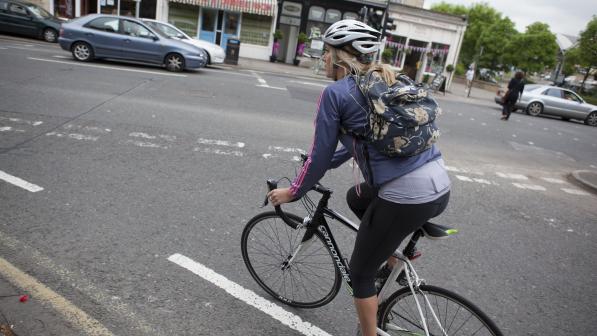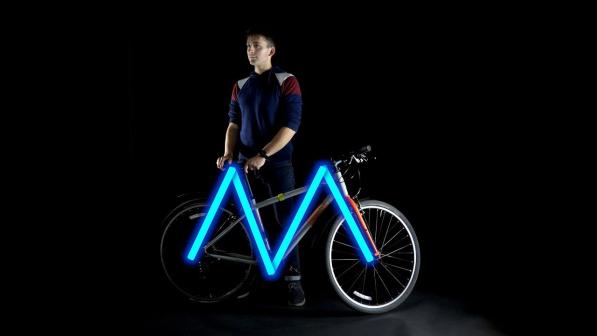Road positioning for cycling explained

Never hug the kerb. That’s rule one of road positioning on a bicycle.
Less assertive cyclists worry that being further out may put them in the way of the traffic. It won’t; you are traffic. Being in the traffic stream helps you to be treated like traffic, keeping you safer.
Reducing risk
Riding in or near the gutter increases the chances of drivers buzzing past you with inches to spare. You’ll have to contend with drains, cambered surfaces, and debris like broken glass that has been ‘swept’ to the edge of the road by passing cars.
And you’re less likely to be seen at all by drivers. The commonest type of car-cyclist collision is the “Sorry, mate, I didn’t see you” variety.
You must register in a driver’s field of vision. You’ll do that best by cycling where they are looking. Drivers look where their vehicle will be in the next few seconds: directly ahead.
They pay less attention to people and objects in their peripheral vision. Drivers are obliged by the Highway Code (Rule 163) to give you “at least as much space as a car” when overtaking.
Let that sink in: at least as much room as a car. That means that they should pull out, cross the central, dashed white line, and pull in again when they are safely past.
By riding further out from the edge of the road, you force overtaking traffic to move further out. It can’t stay in the same lane and pass within inches.

How far from the edge?
Normally you’ll be a metre out or more.
The key factor is not so much the edge of the road as the location of the traffic stream on that road; that is, where cars are actually driving in that traffic lane.
Unless you’re turning right, for example, there are two cycling positions to choose from, relative to the traffic stream. One is the centre of the traffic stream – that is, the centre of the lane, rather than the centre of the road.
You’ll sometimes hear this called ‘the primary position’, but it’s easier to think of it as ‘taking the lane’.
The other position is about a metre to the left of the traffic stream, so long as that doesn’t bring you too close to the kerb. Sometimes called ‘the secondary position’, you can think of it simply as ‘not taking the lane’.
For more on this topic, visit cyclecraft.co.uk








